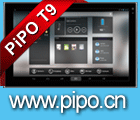Available to pre-order for $2499 at Amazon.com, Panasonic has improved their Low Light performance and their Autofocus performance (it looks like to me, after shooting this video, for now, compared with my GH5 videos that I am posting in the playlist here) on the GH5s compared with last year’s Panasonic GH5 micro four thirds camera. They removed the amazing Sensor Image Stabilization feature of the GH5 though in this camera, they say as some professional users are asking for it to be removed, and they say also that is because they used a 10.28 Megapixel Multi Aspect Ratio MOS Sensor in this one. WIth DCI 4K60p support which is the format that I film this interview using the GH5s at. In this video featuring Sean Robinson of Panasonic USA, you can see the low light performance, the autofocus performance and you can see how it looks like without the image stabilization system. To me after shooting this video interview with the GH5s in a low light situation, it looks like the GH5s might have better autofocus performance compared with the GH5 (though I am not sure if this AF performance is good enough for my handheld video-blogging yet, what do you think?), as far as I understand, the better AF performance compared with the GH5 is because the Venus Engine 10 processor in the GH5s is able to focus more on performing better doing the autofocusing as it does not need to spend performance managing the sensor stabilization, noise reduction and downsampling of the 18 megapixel footage that comes with the GH5.
$2499 Panasonic GH5s interview (filmed with GH5s) better Low Light, better AF, DCI4K60
$1499 DLP 4K Projector Optoma UHD50 and UHD51A with Amazon Alexa
World leader in 4K projectors, Optoma presents their lower cost UHD50 to make 4K Projection more accessible to the mass market. This one features 2x HDMI 2.0 ports, HDR10, 50% vertical lens shift, 1.3 zoom. 2400lumen while the UHD60 is 3000lumen, RGBRGB color wheel, 2 inches smaller, 2 pounds lighter. For $200 more, they are also shipping the UHD51A with the same features as the UHD50 but it also comes with Amazon Alexa support, an Ethernet port, it runs Optoma’s implementation of Android (not for installing apps, possibly for Google Assistant support also), USB Host port.
$799 Lenovo Miix 630 Tablet convertible Windows 10 with Qualcomm Snapdragon 835
Lenovo releases their Tablet convertible running a full Windows 10 on the 64bit ARMv8 Qualcomm Snapdragon 835 processor with built-in LTE. Lenovo digital pen with 1024 levels of sensitivity with Windows Ink. 15.6mm thickness, 1.33kg weight, up to 20 hours of local video playback battery life. Comes with a 12.3″ WUXGA+ touchscreen to be priced starting at $799.
HP Envy x2 Tablet convertible Windows 10 with Qualcomm Snapdragon 835
HP Envy x2 is a detachable convertible Tablet PC running a full Windows 10 on the 64bit ARMv8 Qualcomm Snapdragon 835 processor with built-in always connected LTE and up to 22 hours of battery life. 90min 0% to 90% fast charging. Up to 1,000 hrs of connected stand-by time. Comes with the HP digital pen with Windows Ink for note taking and scribbling.
$1369 HP Spectre x360 15 (2018) with AMD RX Vega M GPU
The HP Spectre x360 15 (2018 version) comes with the first hybrid Intel/AMD processor with an 8th Generation Intel Kaby Lake-G CPU with an AMD RX Vega M GPU on the same package. It comes with a 15.6″ 4K Gorilla Glass 4 touch screen with support for HP’s Tilt Pen, a 360-degree hinge, Bang & Olufsen audio, 16GB DDR4 RAM, 512GB PCIe NVMe SSD and also the option to have the NVIDIA GeForce MX150 GPU instead of the AMD one.
Best of CES 2018: Asus NovaGo Snapdragon 835 Windows 10 at Qualcomm CES 2018 booth
Asus wins my prize of most important “best of CES 2018” device. This is the most powerful ARM Powered laptop yet. Finally, after years of work by thousands of Microsoft and Qualcomm engineers, true full Windows 10 on ARM is just about to be ready to be launched onto the worldwide market. Powered by the 10nm Qualcomm Snapdragon 835, with over 20 hours of battery life, while it comes on Windows 10 S by default it can quickly be “upgraded” to full Windows 10 Professional for ARM that gives support for the emulation of every x86 (32bit emulation supported only for now, 64bit x86 apps will be emulated once Microsoft updates the Windows software further) Windows 10 .exe application, hopefully we can run advanced video editing apps such as Adobe Premiere, Sony Vegas, Pinnacle Studio, advanced music creation applications such as Ableton Live, Propellerhead Studio, advanced photo editing software such as Gimp and Adobe Photoshop. This Asus NovaGo comes with two full sized USB3 Host ports (sadly, no full sized SD card slot), a full sized HDMI output port, fingerprint reader in the corner of the mousepad and a full sized keyboard with a bright glossy 13.3″ 1080p display. At the Qualcomm CES 2018 booth, they are also showing the two other devices (though both Tablet based 2-in-1 devices with flimsy case/stands) that are being released running Windows 10 on Snapdragon 835 which are the HP Envy x2 and the Lenovo Miix 630. I was hoping that somehow this would be the time Lenovo would unveil an ARM Powered Thinkpad style laptop, but hopefully Lenovo will consider to do that soon enough! In my opinion, Lenovo should do a Thinkpad X1 Carbon and Thinkpad x280 style ARM Snapdragon 835 laptop, that would be great, if possible sold at 50 percent cheaper than the Intel version of each. Also if HP would make an ARM Powered version of their HP Spectre x360, that would also be awesome. Of course it would be really great if they would sell this with an unlockable bootloader (they can manage it “securely” through an approval kind of thing if they’d like) and that users could install among many flavors of Linux on it if they’d prefer (Qualcomm should support the community to still keep full GPU acceleration and full LTE support within any Linux). The Asus NovaGo is the only real Laptop form factor yet running this new very important full Windows 10 on ARM platform.
Onyx Boox Note 10.3″ and Max2 13.3″ now shipping
At CES 2018, Onyx is launching Boox Note, the nicest E Ink device yet, thin and light (320gr) 10.3″ 1872×1404 (227dpi) E Ink notepad e-reader to be shipping in February at $549 on Amazon (with a red limited edition for Valentine’s Day) and the Onyx Boox Max2 is a 13.3″ 2200×1650 (207dpi) E Ink notepad e-reader at 550gr in weight for sale now at $849 at Amazon.com (price to be $799) both run on a Quad-core ARM Processor, with Bluetooth, Wi-Fi, very long battery life with a 4100mAh battery in both. The HDMI input is available on Max2 to use the 13.3″ E Ink display as a Computer monitor. Both come with WACOM stylus note input with 2048 levels of touch input for annotations, note taking, idea scribbling, pdf document scribble overlays, with 11 ebook formats supported, eventually that can be used for collaboration and productivity. Both run Android and any Android apk that runs on Android 6 can be loaded and used on these devices which run with 2GB RAM and 32GB Flash storage with a MicroSD slot.
Gemini PDA at CES 2018
Successfully funded with over $1.2 Million on Indiegogo, the Gemini PDA dual boots Android and Debian Linux, comes with a nice keyboard, dual USB Type-C, HDMI output through Type-C, USB Host, option back facing Camera module, 5megapixel front facing camera for video-chat. They have a whole bunch of keyboard shortcuts and a nice UI for shortcuts at the bottom. One SIM card slot and a second eSIM support, LTE it runs on the MediaTek X27 with LTE.
ELIX Wireless EV charging using their Magneto Dynamic Coupling (MDC) technology
ELIX Wireless has developed Magneto Dynamic Coupling (MDC) technology and has been deploying wireless chargers for automobiles. They are in trials with EV companies in China and USA. Their solution uses low frequency, so no heat, no EMI, safe to use, has the ability to work in the rain, can push aside debris. They have built and deployed 7.7KW chargers, these are undergoing trials, the company is also making 3.3KW and 22KW chargers which will be beta tested in 2018.
Tacterion shows Highly Flexible Stretchable Sensor for Smart Clothing of the future
Tacterion shows their innovative and unique capacitive+resistive technology is a highly flexible and stretchable sensor called sensorskin which consists of silicone polymer material and is completely stretchable. Sensors can be deployed on the surface of 3D-curved and even deformable objects for detecting and characterizing interaction and pressure on any surface. The technology is optimized for environments that require the products to be sensitive and extremely robust at the same time. The target markets are Robotics, MedTech, Automotive, Industrial applications and HMI (e.g. Consumer Electronics). Filmed at the IDTechEx Show!
ThinSkin Movable wall for Hotels and Exhibition
ThinSkin makes movable wall for exhibition and for home.They claim that we can change or add the new capacity of electricity and water to the house any time after the installation.They claim that they can build the hotel and room very fast without rebuilding the entire housing plan. Filmed at the IDTechEx Show!
3D Printed Pendrive from TNO
TNO is the research institute who helps to decrease the gap between the university and Industry.They are working in additive manufacturing since last 20 years.They are showing the selective laser 3D printed part along with the stereolithography processed part as a 3D printed pendrive case.They can perform shared research for the company where they develop new material and new method of manufacturing for respective industry. Filmed at the IDTechEx Show!
Smart T-shirt with heart rate monitor by AiQ
AiQ is showcasing their wearable apparels with the sensors like heart rate monitor,motion sensor,temperature sensor. Here they are showcasing the heart rate monitor and logger T-shirt which sends the data to the server via Bluetooth. Filmed at the IDTechEx Show!
NHK Super Hi-Vision 8K with 22.2 surround multichannel sound system
NHK presents their vision of the future with a very large ultra-thin 8K display and with 22.2 channel audio surround depth system, the best video and audio system in the world. All these features are to be included in HDMI 2.1 which is being released now also and you can see my videos on HDMI 2.1 here.
Hisense $799 65″ 4K HDR, $499 55″ 4K HDR, ULED, Quantum Dot, HDR Supreme
Hisense presents their latest range of affordable 65″, 55″ and many other sizes 4K HDR TVs such as the new Hisense H65N6800 with quantum dot sub-€1000, Hisense H65N5750 is a 65″ 4K HDR at sub-€800 or possibly sub-€700 without quantum dot. Hisense H55NU8700 and H65NU8700 that can do up to 1000nits brightness and BT2020 with HDR10 and HLG. Hisense H55N5700 is a very entry level 55″ 4K HDR TV possibly sold at sub-€500. Hisense ULED LED65NU7700 uses Hisense’s latest ULED technology. Hisense is a sponsor of the Russia 2018 Fifa World Cup, selling 4K HDR TVs ready for the upcoming football World Cup. Hisense HZ75U9A is a 75″ ULED with Quantum Dot with up to 2200nits brightness, wide color gamut 75″ 4K HDR TV. Hisense has their own VIDAA Linux based smart TV UI, not Android TV for now. Hisense also shows their 8K ULED LED65MU9800V not for sale yet. LED75NU7700 ULED narrow frame, HDR Supreme.
Skyworth 100″ 4K HDR Android TV, 77″ OLED, cheap 55″ Android TV
Skyworth shows their latest and upcoming 4K HDR TV range with Android TV. Including a 100″ Android TV. Skyworth also sells 77″, 65″, 55″ OLED TVs (probably manufactured by LG) with JBL audio. Skyworth 65″ 65Q8 LCD LED. 55″ 55G7 and 55G6 with Android TV with HLG support, cooca sound bar.
Huawei Hisilicon Kirin 970, 10nm, AI computing
With 5.5 Billion transistors, this is one of the most advanced ARM Processors for smartphones in the world, included in the Huawei Mate 10, Huawei Mate 10 Pro, with a quad-core ARM Cortex-A73, quad-core ARM Cortex-A53, Mali-G72MP12 GPU, featuring the built-in neural network processing.
Geniatech Tablet Dock for 96Boards
Geniatech shows their Tablet Dock for use with 96Boards compatible/sized development boards, where the board can just be swapped into the Tablet Dock to power it, including with touch support. To be distributed by Arrow at an affordable price.
Geniatech also provides a range of 96Board sized open source Qualcomm 410, 820 based development boards which you can see some of them featured in this video filmed at Embedded World 2017:
Andrea Gallo, Linaro VP Segment Groups talks open source AI, copyrights, ARM servers, DRM and more
Andrea Gallo manages the Linaro Enterprise, Home, Mobile, Networking, IoT and Embedded Segment Groups focusing on their specifc market applications around ARM servers, smartphones, home entertainment, networking. Reporting to Linaro members about resource usage, technical achievements, upstream objectives, planning the next Linaro Connect.
Linaro Core Development Group
Mike Holmes is the director of The Linaro Core Development Group, to to help evolve key GNU/Linux upstream technologies across the kernel, power management, security, and virtualization fields with a long-standing experience submitting code upstream, they develop, improve, and maintain these open-source technologies in tight collaboration with the open-source software communities. The Core Development Group coordinates engineering teams and provide management support, Interface and coordinate with other Linaro groups and engineering teams, Support Linaro Members at the engineer level (in their areas of expertise), Execute through the Kernel, Power Management, Security and Virtualization engineering.



